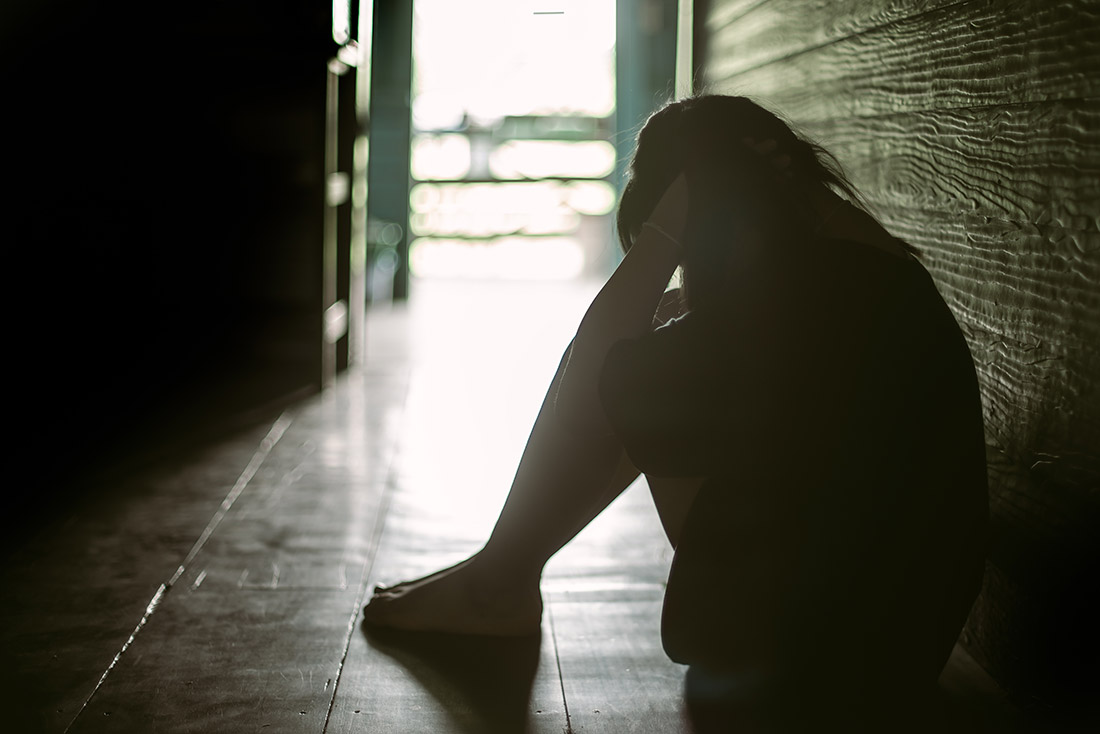
Depression is the most common mental disorder and one of the most serious health problems in the world. It's typically attributed to adults. However, it's increasingly being recognized that it affects teenagers and children as well. Experts are warning that the number of young people affected by depression is rising rapidly. A report from the National Health Fund (NFZ) shows that over 25,000 children are currently being treated for depression. This is twice as many as five years ago. However, it's clear that the scale of the problem is much larger! Depression in children is a topic that shouldn't be ignored.
Contents:
- What are the differences between depression in children and depression in adults?
- What are the causes of depression in children?
- What are the most common symptoms of depression in children?
- What are the less common symptoms of depression in children?

Depression in children and adults - differences
Depression is an insidious disease, increasingly being diagnosed in young children. Unfortunately, there is no lower limit to the incidence. There are documented examples of the disease being detected even in children as young as 2-4 years old. Each case is highly individual. Diagnosing depression in children is significantly more difficult than in adults – the younger the child, the more difficult. The situation is complicated by the fact that childhood depression is not treated as a distinct disease, so everyone – adults and children – is diagnosed using the same criteria. However, depression in children, its course, and symptoms fall outside the standard adult classification. Furthermore, children cannot yet adequately describe their emotions, explain what is bothering them, and why they feel bad. Therefore, the attentiveness and vigilance of those closest to them – parents, teachers, and doctors, who can detect the first signs – is so important.

Depression in children - causes
Unfortunately, the exact causes of depression in both adults and children are unknown. Experts assume the coexistence of several factors—genetic, psychological, and environmental. Certainly, the presence of depression in a parent increases the risk of the disease in a child. Sensitive children are also at greater risk. Traumatic events, difficult experiences, and relationships at home, such as violence, aggression, and abuse, can also have a decisive impact on the development of mood disorders.
Current statistics leave no doubt. According to the National Health Fund, in 2017, 12,100 people under 18 received treatment for depression, while in 2021, the figure rose to 25,300. It is known, however, that this number is significantly higher. Depression in children is becoming a growing problem. According to experts, it affects approximately 2% of children and as many as 20% of adolescents. The COVID-19 pandemic and the current situation in Ukraine have significantly exacerbated the problem. Forced lockdowns, isolation, remote learning, limited peer relationships and loneliness, as well as insecurity and uncertainty, are just some of the catalysts for these increasingly deteriorating statistics.

Symptoms of depression – what should worry a parent?
The key criterion for diagnosing depression in both children and adults is a low mood that persists for at least two weeks. However, children may also experience less common symptoms, often confused with misbehavior or disorders such as ADHD.Characteristic symptoms of depression
- long-term low mood
- loss of energy and fatigue, low activity
- feelings of anxiety and suicidal thoughts
- loss of interests, lack of pleasure in playing
- low self-esteem
- sleep problems – insomnia or excessive sleepiness
- loss of appetite or appetite fluctuations
- sudden changes in weight - weight loss or gain
- tearfulness
- refusal to perform daily duties - reluctance to get up, go to school or kindergarten
- low self-esteem, negative beliefs about oneself
- isolation from the environment, peers; escape into addiction to games, movies, the Internet, etc.
Less typical symptoms of depression - characteristic of childhood
- an increase in aggressive, destructive or self-destructive behaviors, such as self-harm
- increased irritability
- uncontrolled outbursts of anger, screaming and crying
- attention deficits and difficulty remembering, which results in poorer school performance and skipping classes
- severe anxiety and tension causing psychomotor agitation
- withdrawal from interpersonal contacts – aggressive reaction to attempts at closeness
- the youngest children often experience somatic symptoms such as headaches, abdominal pain, diarrhea, and shortness of breath
- developmental regression – children stop talking or develop bedwetting


Podziel się:
Free November at the Royal Residences, or what to see with your child in autumn
What's Hiding in the Forest? - How to Make Magical Pictures with a DIY Flashlight